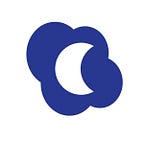Flowcharts are fantastic project management tools. They help you map out complex processes, manage your tasks systematically, and present workflows in a visual way that everyone on your team can understand.
What Makes Flowcharts So Magical?
They make it easy to visualize all aspects of work processes and project workflows, they also provide a common language that improves team communication and cohesiveness.
And that’s not all… Utilizing a flowchart to display your project visually allows you to:
- Clearly display the sequence of tasks required for project completion
- Identify and highlight potential workflow issues
- Discover areas where efficiency, quality, or productivity can be improved
Not to mention, flowcharts are pretty easy to create.
The Basics
When you’re trying to wrap your head around a process, it can be useful to have a visual representation of each step. Your team can create flowcharts for new projects or to refine and improve how existing processes work. Flowcharts are used to communicate and instruct others as to how a process is completed.
Pick Your Flow
- Process Flowchart is the most commonly used and depicts a process step-by-step.
- Workflow Chart helps you understand how your business functions and focusses on how data and documents flow throughout your organization.
- Swimlanes Flowchart depict multiple flows of information side by side.
- Data flowchart are designed to show how data is processed.
Creating Your Flow Chart
1) Choose the process you want to illustrate for your team.
2) List each step needed to complete the process.
3) Designate symbols for the various steps in the process.
4) Draw arrows to link the steps.
5) Review your flowchart with your team and change as needed.
How to Go with the Flow
You have your fancy flow chart all ready, so now how do you put it to use? As a project manager/business owner/etc. you may already have a methodology in mind as to how to lead your team through each step of your project. The benefit of a flow chart is that it makes any management technique more effective by letting you outline parallel and/or interdependent workflows over the course of your project’s development, execution, and completion.
Flowcharts play an invaluable role in both the planning stage of a project and for illustrating the various work processes. Your flow chart delineates each aspect of your project that needs done and when, so all members of your team are organized, on target, and understand their role in the process
Some tips to get the most flow from your chart are:
- Include brief descriptions for each step to increase clarity
- Add indicators for pivotal decision-making points in each process
- Provide links to external project resources that provide greater context and understanding.
Creating a project management process flowchart will help your team:
- Clearly see the flow of work that needs to be accomplished during each step of your project
- Work more efficiently
- Explain concepts and communicate more effectively
If all of this sounds amazing, but seems a bit overwhelming, have no worries, there are plenty of software options available that can help you create your flowcharts. Flowchart software makes it easy to create visual diagrams that represent product development workflows, technical diagrams, company organizational charts, and more. We wanted to highlight a few software options.
Lucidchart is a web-based platform that lets users collaborate on drawing, editing, and sharing charts and diagrams. Lucidchart offers hundreds of templates and a drag-and-drop shapes library, which makes it easy to create flowcharts, organizational charts, mind maps, and more. Lucidchart can be used on a Mac or Windows and also offers both iOS and Android apps.
Gliffy is a cloud-based diagramming tool. Gliffy offers integrations with Google Apps, Google Drive, JIRA, and Confluence. Making flowcharts and diagrams in Gliffy is quick and easy, making it a great option for beginners. Users simply choose a template and drag over the shapes they need.
draw.io is a standalone, open-source diagramming tool that can be used both online and offline. It is the most cost effective being free. Draw.io offers a simple drag-and-drop interface with a visual grid layout. It offers a library of shapes and templates and integrations with G Suite, Dropbox, OneDrive, and other cloud services.
In conclusion, flowcharts can be a great tool to communicate a business processes among many people quickly and simplistically. Creating a visual representation of your business processes helps your team quickly see how various process components relate to one another. Flowcharts also can reveal process flaws, which ultimately helps your team solve problems and improve efficiency.
